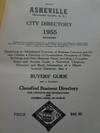
Hesperi et Phosphori nova phaenomena sive observationes circa Planetam Veneris.
by BIANCHINI, Francesco
- Used
- Hardcover
- first
- Condition
- See description
- Seller
-
Paris, France
Payment Methods Accepted
About This Item
Folio [380 x 250 mm] of 1 frontispiece, viii pp. including the title-page printed in red and black, 92 pp., 10 plates out of pagination including 4 folded, 3 engravings in the text. A tear without loss of text in the margin of p. 29. Bound in recent light-brown mottled half-roan, spine ribbed, red morocco lettering piece, mottled edges.
Rare first edition relating for the first time the presence of dark spots on Venus. It is the first atlas of this planet, in which Bianchini determines its axis of rotation.
Riccardi, I, 132; Graesse, I, 437.
" It is in this work that Bianchini recorded his observations of the dark spots of the planet Venus. He determined the rotating movement of this planet. He had his book printed splendidly, dedicated it to the King of Portugal John V, to whom he offered at the same time a machine representing the system of this planet, decorated with gilt silver figures. The king sent in return to the author, in addition to an important sum of money, a new telescope made in London, and which work was admirable; since then he awarded, in 1731, two years after Bianchini's death, the Cross of the Order of Christ to the count Gaspard Bianchini, his nephew, and he added, in 1732, a commander's residence, by paying with his treasure the due costs for the shipping of the diploma, to the coffers of the order, and all the other expenses. "
Francesco Bianchini (1662-1729) was received member of the physics and mathematics Academy, created by Monsignor Ciampini.
" In 1717, he had an accident which interrupted important observations that he had started on the planet Venus, the first ones dating back to 1716; he took them up again. Then he made incredibly peculiar observations on the dark spots of this planet. He made them with the machine that he had presented to the Academy of Paris; and by using stronger telescopes than the ones used until then, he made brand new observations and discoveries. He was keeping on at the same time with his work on the tombs of the House of Augustus: "he shut himself up during the day, Fontenelle says, in the sepulchral underground dovecote, and at night he went up to his observatory." This is how were published, in two consecutive years, 1727 and 1728, two important works, one about the dovecote, and the other on Venus. It is by these two remarkable productions that he ended his career. "Michaud
Besides the present work is an important example of illustration in Italian books from the 18th century.
It is illustrated with a frontispiece engraved by Rocco Pozzi after Stefano Pozzi, with 3 engravings in the text and with 10 plates out of pagination dedicated to Bianchini's discoveries, 3 among them (2 in the text and 1 plate out of pagination) being executed in mezzotint.
One of the engravings illustrating the second chapter represents the lunar crater Platon and 2 of the full-page plates show contemporary telescopes.
William Ashworth noted in the catalogue oh his exhibition entitled The Face of the Moon that : " This small engraving, which appears in the text as part of the introductory chapter, shows the crater Plato at the right, with Aristotle and Eudoxus at left, and the mountain range of the alps cut by the dramatic slash of the Alpine Valley. Bianchini noted with surprise that the valley did not appear on the great Cassini map, and he was right; Bianchini was the first to see and to portray this most impressive of lunar valleys" (p. 11).
A good copy of this rare first edition of the utmost interest with regard to astronomy.
Français
Rome, Giovanni Maria Salvioni, 1728.
In-folio de 1 frontispice, viii pp. dont le feuillet de titre imprimé en rouge et noir, 92 pp., 10 planches hors texte dont 4 dépliantes, 3 gravures dans le texte. Déchirure sans manque de texte dans la marge de la p.29. Relié en demi-basane havane mouchetée récente, dos à nerfs, pièce de titre en maroquin rouge, tranches mouchetées.
380 x 250 mm.
Edition originale rare relatant pour la première fois la présence de tâches sur vénus.
Il s'agit du premier atlas de cette planète, dans lequel Bianchini détermine son axe de rotation.
Riccardi, I, 132 ; Graesse, I, 437.
" C'est donc dans cet ouvrage que Bianchini a consigné ses observations des taches de la planète Vénus. Il a donné une détermination du mouvement de rotation de cette planète. Il fit imprimer son livre magnifiquement, le dédia au roi de Portugal Jean V, auquel il offrit en même temps une machine représentant le système de cette planète, ornée de figures d'argent doré. Le roi envoya en retour à l'auteur, outre une forte somme d'argent, une lunette de nouvelle invention faite à Londres, et dont le travail était admirable ; il accorda depuis, en 1731, deux ans après la mort de Bianchini, la croix de l'ordre du Christ au compte Gaspard Bianchini, son neveu, et il y ajouta, en 1732, une commanderie, en payant de son trésor les frais dus, pour l'expédition du diplôme, à la caisse de l'ordre, et toutes les autres dépenses. "
François Bianchini (1662-1729) fut reçu membre de l'Académie physico-mathématique, établie par Monsignor Ciampini.
" En 1717, il eut un accident qui interrompit des observations importantes qu'il avait commencées sur la planète de Vénus, et dont les premières remontaient même jusqu'en 1716 ; il les reprit. Il en fit surtout alors d'infiniment curieuses sur les taches de cette planète. Il les faisait avec cette machine qu'il avait présentée à l'Académie de Paris ; et, pouvant employer des lunettes plus fortes qu'on ne l'avait pu jusqu'alors, il fit des découvertes et des observations toutes nouvelles. Il continuait en même temps son travail sur les tombeaux de la maison d'Auguste ; " il s'enfermait le jour, dit encore Fontenelle, dans le colombier sépulcral et souterrain, et la nuit il montait à son observatoire. " Aussi vit-on paraître, dans deux années consécutives, 1727 et 1728, deux importants ouvrages, l'un sur le colombier, et l'autre sur Vénus. Ce fut par ces deux productions remarquables qu'il termina sa carrière. " Michaud.
Le présent ouvrage est d'autre part un exemple important de l'illustration dans les livres italiens du XVIIIe siècle.
Il est illustré d'un frontispice gravé par Rocco Pozzi d'après Stefani Pozzi, de 3 gravures dans le texte et de 10 planches hors texte consacrées aux découvertes de Bianchini, 3 d'entre elles (2 dans le texte et 1 planche hors texte) étant réalisées en mezzotinte.
L'une des gravures illustrant le chapitre 2 représente le cratère lunaire Platon et 2 des planches à pleine page montrent des télescopes de l'époque.
William Ashworth notait dans le catalogue de son exposition intitulé The Face of the Moon que : " This small engraving, which appears in the text as part of the introductory chapter, shows the crater Plato at the right, with Aristotle and Eudoxus at left, and the mountain range of the alps cut by the dramatic slash of the Alpine Valley. Bianchini noted with surprise that the valley did not appear on the great Cassini map, and he was right; Bianchini was the first to see and to portray this most impressive of lunar valleys" (p. 11).
Bon exemplaire de cette rare originale du plus haut intérêt du point de vue de l'astronomie.
Reviews
(Log in or Create an Account first!)
Details
- Bookseller
- LIBRAIRIE CAMILLE SOURGET
(FR)
- Bookseller's Inventory #
- CBF14
- Title
- Hesperi et Phosphori nova phaenomena sive observationes circa Planetam Veneris.
- Author
- BIANCHINI, Francesco
- Book Condition
- Used
- Quantity Available
- 1
- Binding
- Hardcover
- Weight
- 0.00 lbs
Terms of Sale
LIBRAIRIE CAMILLE SOURGET
About the Seller
LIBRAIRIE CAMILLE SOURGET
About LIBRAIRIE CAMILLE SOURGET
Glossary
Some terminology that may be used in this description includes:
- New
- A new book is a book previously not circulated to a buyer. Although a new book is typically free of any faults or defects, "new"...
- First Edition
- In book collecting, the first edition is the earliest published form of a book. A book may have more than one first edition in...
- Plate
- Full page illustration or photograph. Plates are printed separately from the text of the book, and bound in at production. I.e.,...
- Spine
- The outer portion of a book which covers the actual binding. The spine usually faces outward when a book is placed on a shelf....
- Gilt
- The decorative application of gold or gold coloring to a portion of a book on the spine, edges of the text block, or an inlay in...
- Edges
- The collective of the top, fore and bottom edges of the text block of the book, being that part of the edges of the pages of a...
- Morocco
- Morocco is a style of leather book binding that is usually made with goatskin, as it is durable and easy to dye. (see also...




